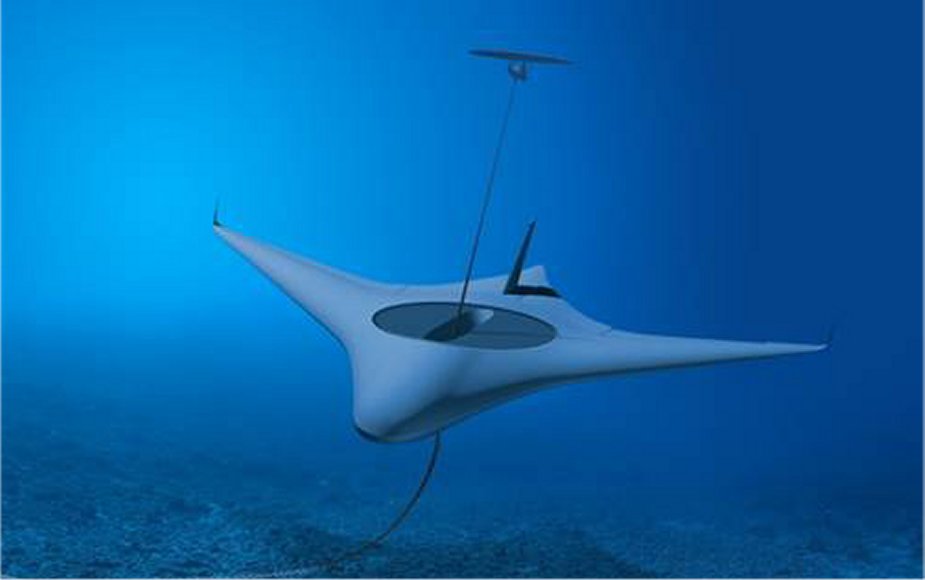Breaking news
Northrop Grumman is creating a new class of UUV inspiring by Manta Ray.
According to a press release published by Northrop Grumman on September 26, 2022, the company is creating a new class of UUV for undersea missions.
Follow Navy Recognition on Google News at this link
 Artist rendering of the future Manta-Ray Unmanned Underwater Vehicle (Picture source: Northrop Grumman)
Artist rendering of the future Manta-Ray Unmanned Underwater Vehicle (Picture source: Northrop Grumman)
A Manta Ray is a social creature that frequents the tropical waters of the Great Barrier Reef. Their curiosity and playful nature make the Manta Ray a favorite among scuba divers.
Northrop Grumman has been pioneering new capabilities in the undersea domain for more than 50 years. Manta Ray, a new unmanned underwater vehicle, taking its name from the massive “winged” fish, will need to be able to operate on long-duration, long-range missions in ocean environments without need for on-site human logistics support – a unique but important mission needed to address the complex nature of undersea warfare.
Northrop Grumman is developing its unique full-scale demonstration vehicle using several novel design attributes that support the Defense Advanced Research Projects Agency’s (DARPA’s) vision of providing ground-breaking technology to create strategic surprise. Manta Ray will also be able to anchor to the seafloor in a low power state while harvesting energy from the environment.
Manta Ray will have command, control, and communications (C3) capability to enable long-duration operations with minimal human supervision. The data from Manta Ray will help the joint force make better decisions and gain advantage during missions.
Northrop Grumman was recently awarded a Phase 2 contract to continue the Manta Ray program that began in 2020. As part of Phase 2, Northrop Grumman will work on subsystem testing followed by fabrication and in-water demonstrations of full-scale integrated vehicles.
The company also broke ground on a new system integration and test lab that will use modeling and simulation to test the system’s software before getting loaded onto the vehicle.




























